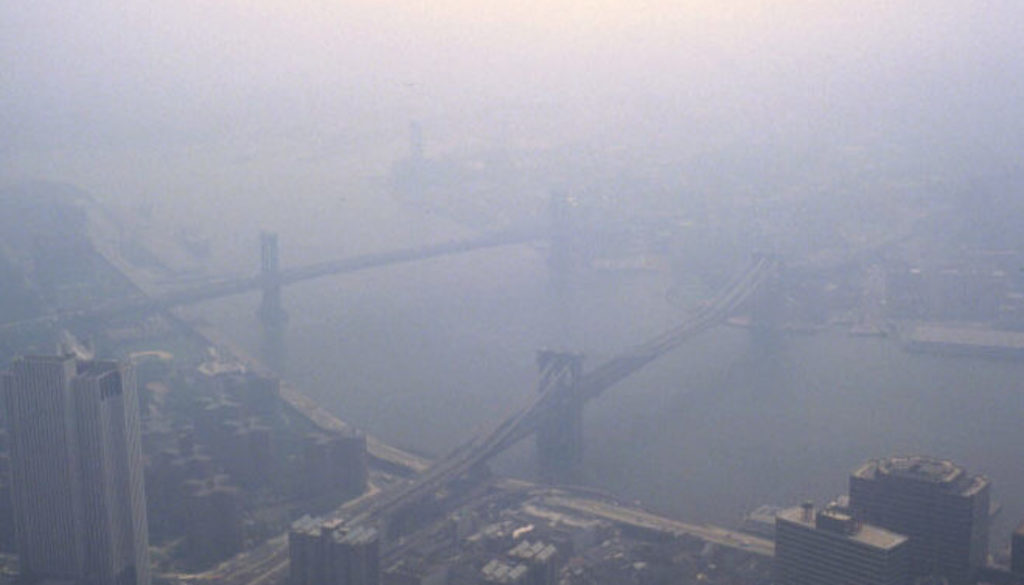NRDC Fights Another Pruitt Rollback of Smog and Methane Curbs
By Mark Szybist, Natural Resources Defense Council
In yet another step to dismantle critical protections for our air and climate, EPA Administrator Scott Pruitt has proposed to withdraw the EPA’s guideline for states to reduce smog-forming air pollution from oil and gas production, processing, and transmission activities. If this latest rollback goes final and withstands court review, Americans living in oil and gas regions will be forced to breathe more lung-damaging smog and cancer-causing pollution, while suffering more methane-driven climate warming.
Under the Clean Air Act, states have to cut smog-forming pollution to meet the national health standard for ozone, through State Implementation Plans. When EPA issues a “control techniques guideline” (CTG) for an industry—essentially, a set of recommendations for improving air pollution controls in the industry—states with smog problems are revise their state plans to reflect the guideline. EPA triggered that process by issuing a CTG for the oil and gas industry in 2016. Pruitt’s proposed repeal now throws all that into uncertainty, heightening threats to the health of families living near oil or gas development.
This outcome is good for no one. State agencies will lose their strongest tool to assure that upwind states do their part to curb oil and gas pollution that travels across state lines, as well as the assurance of a level playing field among oil and gas states. Oil and gas production companies may now face different programs in different states (instead of seeing all programs built on the same guidelines). And most important, the public will have to wait and wonder even longer for air that is safe to breathe.
The CTG targets emissions of volatile organic compounds (VOCs) from existing oil and gas facilities—pollution that forms ozone smog when it reacts in sunlight with nitrogen oxides. EPA issued the guideline in 2016, alongside a set of different federal standards to cut methane and VOC pollution from new installations nationwide. Like the methane standards, the CTG relies on readily available and cost-effective measures to cut air pollution from oil and gas equipment, through curbs on leaks, venting, and flaring. (Scott Pruitt is also trying to kill the methane standards, but so far without success, as we explain here.)
According to a report by our colleagues at the Clean Air Task Force (CATF), oil and gas air pollution contributes to unhealthy air quality in urban and rural areas throughout the country. Wyoming, for instance, now has ozone pollution rivaling Los Angeles’s. The oil and gas industry’s methane pollution also ranks as our nation’s #2 industrial contributor to climate change.
Pennsylvania, the nation’s second-largest producer of natural gas, is near the top of the list of states most affected by oil and gas air pollution. The CATF report identifies the Commonwealth as one of the four states with the most asthma attacks attributable to industry pollution. The others are Texas, Oklahoma, and Colorado.
In most states the CTG applies only to oil and gas facilities located in or near the areas with unhealthy ozone smog levels. In Pennsylvania, by contrast, the CTG applies across the entire state, because Pennsylvania lies within the “Ozone Transport Region,” the northeastern U.S. region particularly afflicted by ozone smog. For this reason, withdrawing the CTG will affect Pennsylvania more than any other state.
Coincidentally, Pennsylvania’s Department of Environmental Protection (DEP) published its proposal to implement the oil and gas CTG the very day that Scott Pruitt announced his proposal to roll it back. At the same time, the Department is preparing to finalize pollution control measures covering new oil and gas production and transmission sources. Those long-awaited requirements, in the form of “general permits” known as GP-5 and GP-5A, are expected to significantly reduce emissions of methane, VOCs, and other pollutants from new sources.
But neither of these requirements for new sources will cover the hundreds of thousands of already operating oil and gas sources, which the Environmental Defense Fund has foundemit about 54,000 tons of VOCs per year (about nine times higher than what companies are reporting to the DEP) and about 520,000 tons of methane (five times more than companies’ self-reported data show). So Pennsylvania’s move to implement the CTG is a major step forward.
NRDC and our partners will do all we can to defeat Pruitt’s proposal to withdraw the CTG. The Pruitt proposal itself notes that “unless and until EPA decides to withdraw the CTG, states remain obligated” to move forward with steps to curb VOC pollution from existing oil and gas sources.
So we will urge Pennsylvania Governor Tom Wolf and the state’s Environmental Quality Board (EQB) to stay the course. Pennsylvania’s Air Pollution Control Act unquestionably gives the EQB the authority to act on both VOCs and methane, whether or not EPA’s CTG remains. Pennsylvania’s vulnerable citizens are depending on the state’s leaders to stand up to the polluters, with or without Scott Pruitt.

